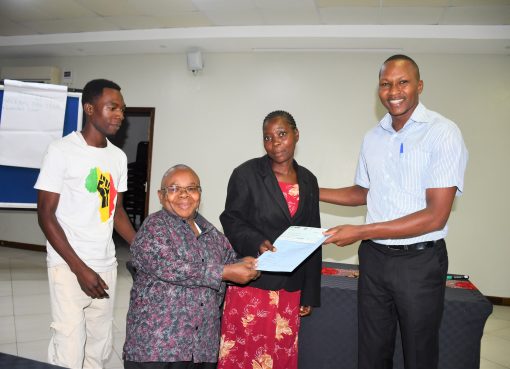Meru University of Science and Technology (MUST) is holding a two-day global workshop aimed at coming up with possible innovations that will ensure the availability of affordable housing materials.
Addressing the media on the side-lines of the workshop, the University’s Vice-Chancellor Professor Romanus Odhiambo said researchers from the University and technical people from Italy, Sweden, Tanzania, and Uganda have come together to find a solution to the housing problem that has been facing Kenyans and Africans at large.
“The housing situation in Kenya and the whole of the African continent is not very good and we are all aware that many people are moving from rural to urban areas where there are no proper housing facilities. This has resulted in cities and towns which are basically not good for people to live,” said Professor Odhiambo.
During the workshop, he added, we will be discussing what is it we can do as a university, scholars, and other stakeholders to mitigate some of these problems.
He said building is expensive in Kenya starting with the land, but that is not as serious a problem compared to the cost of building materials.
“The materials are so high that ordinary people can’t afford them, no wonder only about 30 percent of the 50 million people have decent housing,” said Professor Odhiambo adding that the University was trying to see how they can come up with a technology innovation that can come up with materials that can bring the cost down.
“This is based on research and after that, it is expected the researchers will come up with innovative products which already they have and eventually get to commercialize and work with people that are interested in this,” he said.
Dr. Joseph Mwiti, a researcher from the University, said they have been leading in developing low-cost construction materials, especially cement which accounts for nearly 50 percent of the construction cost that goes into a building.
“We are trying to lower the cost of cement by developing new alternative cement that is clay-based bearing in mind that clay is virtually found in almost all the counties in Kenya.
He said they were also aiming at changing the landscape for the cement industries in Kenya considering that most of the cement industries are located along Nairobi-Mombasa Road in Athi river because of the proximity to the raw materials.
“We hope this is going to revolutionize the construction industry in terms of reducing the cost of cement which will in return lower the cost of construction,” said Dr. Mwiti.
He said the institution has already developed clay-based cement and was at the moment seeking industrial partners in terms of production.
“We want to thank our partners in this endeavour including Professor Luca Valentini of the University of Padova, Italy, Professor Raine Isaksson, Uppsala University, Sweden, Dr. Apollo, Makerere University, Uganda, and Dr. Fatma Mohamed of the University of Dar Salaam, Tanzania who have been very instrumental in ensuring that we achieve the dream of affordability in terms of housing.
He said the cement has already been tested and has met the East African standards for use as a cement binder.
“We look forward to having more clay in the cement and continue reducing the cost. We will also be having more engagements with the policymakers who develop the standards so that we can even get more quantities of clay into this cement,” said Dr. Mwiti.
He said the clay-based cement is friendlier to the environment since it was reducing the clinker used in the production by 50 -percent.
“This is good news to the government in the sense that the carbon being emitted is proportional to the amount of clinker that we use. For every tonne of clinker that we produce, an equivalent amount of carbon dioxide is emitted,” he said.
He added: “Therefore if we lower the clinker amount in clay-based cement by 50 percent, we are likely to realize carbon reduction of an equivalent amount.”
He said they have received great support during the development of the research in terms of research funding from Kenya National Innovation Agency and the state department for housing.
Mr. Antony Ngángá from the state department of housing said they were excited to partner with the University and especially on issues pertaining to building technologies.
“We usually use appropriate technologies that are available in the market some of which are imported and we are really excited when we have the technology being produced here,” said Mr. Ngángá.
He also challenged the researchers to initiate better technologies and innovations in roofing materials to lower the cost of constructing houses as much as possible.
By Dickson Mwiti




